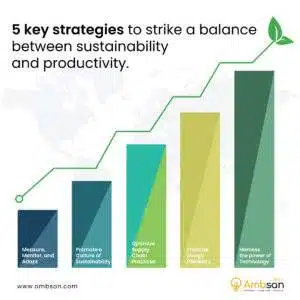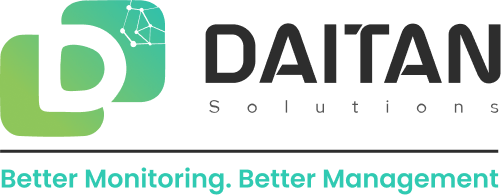© 2024 Ambsan All right reserved.
Going Green Without Going Slow: How Digital Transformation Can Be Your Eco-Ally

In our fast-paced, digital world where data flows across the globe at the speed of thought, the concept of “going green” might seem like a relic from the past to most of us. But let me assure you, sustainability isn’t just about hugging trees or donning a pair of hemp sandals anymore, it’s about making smart and environmentally conscious choices.
However, pursuing environmental responsibility shouldn’t come at the expense of operational efficiency and the bottom line. In fact, when executed strategically, going green can often enhance efficiency and drive innovation within an organization. So, how do you strike that delicate balance between sustainability and productivity? Let’s delve into some key strategies.

Harness the Power of Technology: Digital transformation lies at the heart of sustainable business practices. Embracing cutting-edge technologies such as the Internet of Things (IoT), artificial intelligence (AI), and data analytics can empower organizations to optimize resource utilization, streamline processes, and minimize waste. For instance, IoT sensors can monitor energy consumption in real time, allowing for proactive adjustments to reduce usage without compromising productivity.
Prioritize Energy Efficiency: Energy consumption is a significant contributor to a company’s carbon footprint. By investing in energy-efficient solutions and renewable energy sources, businesses can reduce their environmental impact and lower operational costs in the long run. Implementing LED lighting, upgrading HVAC (heating, ventilation & air conditioning) systems, and adopting smart building management systems are just a few initiatives that can yield substantial energy savings.
Optimize Supply Chain Practices: A greener supply chain isn’t just about eco-friendly packaging or transportation; it’s about reimagining the entire value chain to minimize waste and emissions. Leveraging digital platforms for supply chain visibility and collaboration can enable companies to identify inefficiencies, optimize routes, and source materials sustainably. Additionally, fostering partnerships with environmentally conscious suppliers can further enhance the sustainability of the supply chain.
Promote a Culture of Sustainability: Sustainable practices are most effective when embraced by every member of an organization. Educating employees about the importance of environmental leadership and empowering them to contribute ideas for improvement fosters a culture of sustainability. Whether it’s encouraging telecommuting to reduce carbon emissions from commuting or implementing office recycling programs, every individual has a role to play in the green transformation.
Measure, Monitor, and Adapt: Continuous improvement is key to both sustainability and efficiency. Establishing clear metrics to track environmental performance allows organizations to identify areas for improvement and measure the effectiveness of implemented initiatives. Regular assessments and audits help ensure compliance with environmental regulations and standards while providing insights into emerging opportunities for innovation.
Now, you might be thinking, isn’t all this new tech going to use a ton of energy itself? That’s a valid concern. But did you know that cloud providers are often more eco-conscious than your average data center? They consolidate resources, share infrastructure, and use renewable energy sources, making the digital world greener than ever.
In conclusion, the journey towards a greener future doesn’t have to be at odds with operational efficiency. By leveraging technology and embracing a mindset of continuous improvement, businesses can achieve the dual objectives of reducing their environmental footprint while enhancing productivity and profitability.


